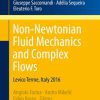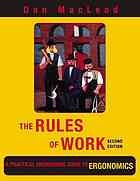Wavelength Division Multiplexing A Practical Engineering Guide 1st Edition by Klaus Grobe, Michael Eiselt ISBN B00F4180KC 9780470623022
$50.00 Original price was: $50.00.$25.00Current price is: $25.00.
Wavelength Division Multiplexing A Practical Engineering Guide 1st Edition by Klaus Grobe, Michael Eiselt – Ebook PDF Instant Download/Delivery: B00F4180KC ,9780470623022
Full download Wavelength Division Multiplexing A Practical Engineering Guide 1st Edition after payment
Product details:
ISBN 10: B00F4180KC
ISBN 13: 9780470623022
Author: Klaus Grobe, Michael Eiselt
In this book, Optical Wavelength Division Multiplexing (WDM) is approached from a strictly practical and application-oriented point of view. Based on the characteristics and constraints of modern fiber-optic components, transport systems and fibers, the text provides relevant rules of thumb and practical hints for technology selection, WDM system and link dimensioning, and also for network-related aspects such as wavelength assignment and resilience mechanisms. Actual 10/40 Gb/s WDM systems are considered, and a preview of the upcoming 100 Gb/s systems and technologies for even higher bit rates is given as well.
Key features:
- Considers WDM from ULH backbone (big picture view) down to PON access (micro view).
- Includes all major telecom and datacom applications.
- Provides the relevant background for state-of-the-art and next-gen systems.
- Offers practical guidelines for system / link engineering.
Wavelength Division Multiplexing A Practical Engineering Guide 1st Edition Table of contents:
1. Introduction to Wavelength Division Multiplexing (WDM)
- Overview of Optical Fiber Communication Systems
- The Need for Multiplexing in Modern Communications
- Basic Principles of Wavelength Division Multiplexing
- Evolution and Applications of WDM
2. The Physics of Wavelength Division Multiplexing
- The Basics of Light and Optics
- Fiber Optic Transmission
- Principles of Light Propagation in Optical Fibers
- Chromatic Dispersion and Its Effect on WDM Systems
3. WDM System Components
- Light Sources: Lasers and LEDs
- Optical Amplifiers: Erbium-Doped Fiber Amplifiers (EDFAs)
- Multiplexers and Demultiplexers
- Optical Add/Drop Multiplexers (OADMs)
- Fiber and Fiber Optic Connectors
4. Types of Wavelength Division Multiplexing
- Dense Wavelength Division Multiplexing (DWDM)
- Coarse Wavelength Division Multiplexing (CWDM)
- Comparison of DWDM and CWDM
- Hybrid WDM Systems
5. System Design and Architecture
- WDM System Architectures
- Point-to-Point vs. Ring Topologies
- WDM Network Design Considerations
- Link Budget and System Performance
6. Signal Quality and Performance Issues
- Signal Distortion in WDM Systems
- Noise and Crosstalk
- Dispersion Management and Compensation
- Error Rate Analysis and System Optimization
7. Optical Amplification in WDM Networks
- Principles of Optical Amplifiers
- Types of Optical Amplifiers
- Role of Amplifiers in Long-Distance WDM Transmission
- Gain Flattening and Noise Figure
8. WDM Network Management and Control
- Monitoring and Managing WDM Systems
- Network Management Protocols for WDM
- Dynamic Reconfiguration and Protection Mechanisms
- Traffic Grooming in WDM Networks
9. Advanced WDM Technologies
- Next-Generation WDM and Optical Networks
- Hybrid Optical and Electronic Networks
- Wavelength Routing and Switching
- Optical Networking Standards and Protocols
10. Case Studies and Real-World Applications
- Large-Scale Deployment of WDM Networks
- Case Studies in Telecommunications and Data Networks
- WDM in Long-Haul and Metropolitan Area Networks (MANs)
- Applications in High-Speed Internet and Cloud Computing
11. Future Trends and Developments
- Innovations in WDM Technology
- Quantum Communications and WDM
- The Impact of Software-Defined Networks (SDN) on WDM
- Future Challenges in WDM Network Scaling
12. Conclusion
- Summary of Key Concepts
- Future Outlook for WDM Technologies
Appendices
- Glossary of Terms
- List of Key Equations and Formulas
- Further Reading and Resources
Index
About the Authors
- Klaus Grobe: Background and Expertise
- Michael Eiselt: Background and Expertise
People also search for Wavelength Division Multiplexing A Practical Engineering Guide 1st Edition:
coarse wavelength division multiplexing
what occurs in the wavelength division multiplexing wdm process
dense wavelength division multiplexing dwdm
explain wavelength division multiplexing
Tags:
Klaus Grobe,Michael Eiselt,Wavelength,Division Multiplexing,Practical Engineering
You may also like…
Engineering
Reservoir Modelling A Practical Guide 1st Edition by Steve Cannon ISBN 1119313465 9781119313465
Psychology - Psychotherapy
Crisis Intervention A practical guide 1st Edition Alan A. Cavaiola
Jurisprudence & Law
A Practical Guide to Construction Adjudication 1st Edition Pickavance
Uncategorized
Control Systems Engineering Exam Reference Manual A Practical Study Guide Third Edition Bryon Lewis
Computers - Applications & Software












